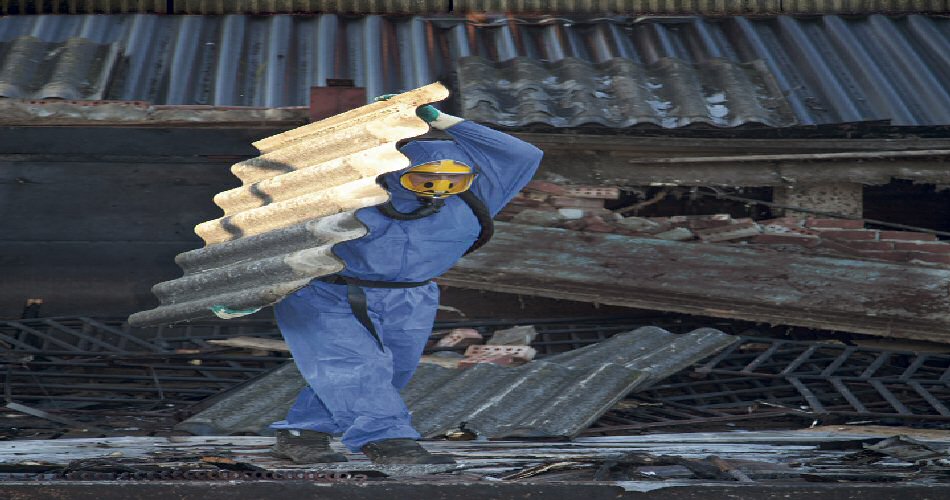ADDRESSING CONTRACTORS POLLUTION LIABILITY RISKS
Increased opportunities in 2019 will lead to more exposures of all sizes
By Jeff Slivka
Buoyed by increased spending within the institutional, manufacturing, and public works sectors, the most recent Dodge Construction Outlook reported a likely 3% increase in construction starts throughout 2019.
The problem is that the rise in industrywide opportunities has been accompanied by a growing potential for liability, both big and small. The tendency towards design/build arrangements has not only greatly sped the delivery process, but it also has blurred the lines between all participants to produce errors and omissions claims, even for “consultative advice.” Further challenges involve the strict enforcement of governmental guidelines and the desire by professionals to take on more work, even in areas of construction in which they have limited expertise or familiarity.
In recent years, a rising number of contractors have embraced risk management solutions tailored to unique project specifications. Driven by insurance requirements and the need to protect assets in an extremely litigious construction environment, contractors pollution liability (CPL) has become more popular for its ability to cover the pollution conditions resulting from the contracted operations performed by or on behalf of the named insured.
[E]ducation centered on identifying exposures, claims, increased contractual requirements, and the scope of coverage under the typical CPL policy will lead CPL buyers to look beyond typical risk management tactics for protection.
RT New Day recently examined claims from more than 1,200 insured contractors in 2016 and 2017. Subjects represented everyone from U.S. specialty trade contractors to general contractors across the country, with company sizes ranging from $1 million in revenue all the way up to $5 billion.
In all, an average of one out of 16 contractors suffered a total of 77 environmental claims in the two-year period. This is up from 48 over the previous two-year period—2014 and 2015, where about one in 21 contractors had such claims.
Microbial matter made up 29% of the claims in 2016 and 2017, with 22 in all. This is up from 16 claims posted in the earlier two-year period. In 2016 and 2017, mold and fungi constituted the majority of these exposures, with Legionella accounting for two claims.
In other areas:
- Project site spills accounted for 10 claims in the most recent period. These ranged from the spill of fuel, lubricants or product from equipment, fuel tanks, or other structures, such as transformers, resulting from the work itself or from vandalism. This is up from six during the prior two-year period.
- Asbestos (in/on product or naturally occurring) has seen the biggest jump. In 2016 and 2017, there were 13 such claims, mostly involving the disturbance of structures containing asbestos (insulation, ceiling/floor tiles, etc.). There were no claims involving asbestos in the prior two years.
- Disturbance of existing structures or utilities (water, sewer, electrical, gas, etc.) accounted for 13 claims in the most recent time frame. This is up from nine during the previous two years.
- Runoff from the construction project site accounted for three claims.
- Exposure to construction material or product led to three claims. These typically involved “third-party action over” exposures.
- Dust or fumes (containing some type of hazard—silica, welding fumes, etc.) resulted in two claims.
- Many of the remaining claims resulted from a combination of releases from contents/cargo of trucks, real estate owned by the contractor (maintenance shops, offices, storage facilities, etc.) or others that could not be classified.
Going forward, education centered on identifying exposures, claims, increased contractual requirements, and the scope of coverage under the typical CPL policy will lead CPL buyers to look beyond typical risk management tactics for protection.
Other factors include the broad coverage terms currently provided by carriers within the realm of microbial matter—mold/fungi and bacteria. In addition, coverage enhancements will continue to be available for emergency remediation, crisis management, litigation, and subpoena expenses. Some carriers will even provide coverage for the green building and/or sustainable/energy—efficient materials used in restoration events.
As for the market itself, approximately 40 insurance carriers offer CPL coverage either as a monoline program or as an endorsement to another product. Due to the abundance of carrier competition, premiums are now extremely stable for small to mid-market businesses. They’re even softer for larger enterprises, which is especially good news for contractors, since the threat of liability has never loomed larger.
There are many moving variables in this demanding, fast-paced environment—one that is particularly unforgiving of even minor miscalculations. Fortunately, the insurance marketplace has steadily evolved with an expanding portfolio of risk management solutions aimed directly at resolving an ever-growing list of pollution exposure issues for all types of contractors.
 The author
The author
Jeff Slivka is President–National Environmental and Construction Professional Practice at RT New Day (www.RTSpecialty.com). RT New Day is a specialty intermediary for agents and brokers with expertise in environmental insurance, environmental risk management and construction-related professional liability. You can reach Jeff at jeff.slivka@rtspecialty.com.






